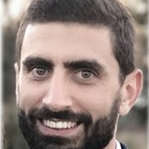Advances in Sensors Development and Computer Science: Contributing to Neuromuscular Coordination in Human Movement
A special issue of Sensors (ISSN 1424-8220). This special issue belongs to the section "Biomedical Sensors".
Deadline for manuscript submissions: 30 November 2024 | Viewed by 11391
Special Issue Editors
Interests: neuromuscular function; muscle coordination; electromyography; strength training; kinesiology
Special Issues, Collections and Topics in MDPI journals
Interests: sports medicine; biomechanics; motor control; human movement variability
Special Issues, Collections and Topics in MDPI journals
Special Issue Information
Dear Colleagues,
The study of neuromuscular coordination involves investigating neural and muscular mechanisms to explain physiological and biomechanical adaptations that result from training and rehabilitation, injury and/or disease. It covers a broad area in human movement: from sports and exercise, rehabilitation and motor learning to ergonomics and orthotic devices development.
The massive ongoing technological development, namely in sensors development and computer science, has been allowing the continuous in-depth understanding of the neuromuscular function. For example, high-density surface electromyography and shear wave elastography are two technologies that are expanding the current knowledge of neural and muscular mechanisms. Similarly, machine learning and deep learning algorithms also significantly contribute to understanding complex physiological phenomena that relate neuromuscular coordination with disease.
This Special Issue aims to invite contributions on the more recent developments and advances of biosensors and innovative methodological approaches applied to investigate neuromuscular mechanisms and how they adapt to different contexts of human movement: e.g., physical exercise, strength training, motor learning, rehabilitation, movement disorders and injury, fatigue, and aging.
We are open to receiving submissions of both review and original research articles that involve the use of sensors that quantify neural- and muscular-related parameters with a particular emphasis on neuromuscular coordination.
Dr. Pedro Pezarat-Correia
Dr. João R. Vaz
Guest Editors
Manuscript Submission Information
Manuscripts should be submitted online at www.mdpi.com by registering and logging in to this website. Once you are registered, click here to go to the submission form. Manuscripts can be submitted until the deadline. All submissions that pass pre-check are peer-reviewed. Accepted papers will be published continuously in the journal (as soon as accepted) and will be listed together on the special issue website. Research articles, review articles as well as short communications are invited. For planned papers, a title and short abstract (about 100 words) can be sent to the Editorial Office for announcement on this website.
Submitted manuscripts should not have been published previously, nor be under consideration for publication elsewhere (except conference proceedings papers). All manuscripts are thoroughly refereed through a single-blind peer-review process. A guide for authors and other relevant information for submission of manuscripts is available on the Instructions for Authors page. Sensors is an international peer-reviewed open access semimonthly journal published by MDPI.
Please visit the Instructions for Authors page before submitting a manuscript. The Article Processing Charge (APC) for publication in this open access journal is 2600 CHF (Swiss Francs). Submitted papers should be well formatted and use good English. Authors may use MDPI's English editing service prior to publication or during author revisions.
Keywords
- biosensors
- signal processing
- machine learning
- central nervous system
- neurophysiology
- biomechanics
- sports and exercise
- sports medicine
- strength training
- rehabilitation
- motor control







